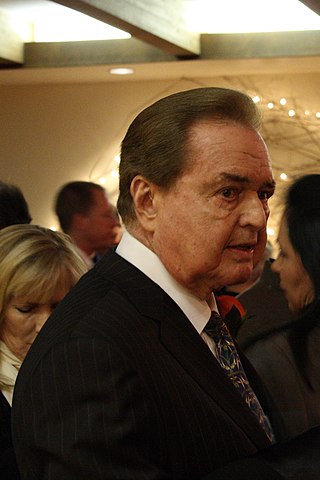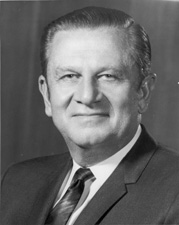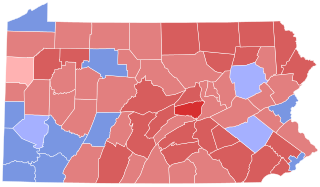| |||||||||||||||||
| |||||||||||||||||
 County results Cannon: 40–50% 50–60% 60–70% Raggio: 50–60% 60–70% | |||||||||||||||||
| |||||||||||||||||
| Elections in Nevada |
|---|
 |
The 1970 United States Senate election in Nevada was held on November 3, 1970. Incumbent Democratic U.S. Senator Howard Cannon won re-election to a third term.
| |||||||||||||||||
| |||||||||||||||||
 County results Cannon: 40–50% 50–60% 60–70% Raggio: 50–60% 60–70% | |||||||||||||||||
| |||||||||||||||||
| Elections in Nevada |
|---|
 |
The 1970 United States Senate election in Nevada was held on November 3, 1970. Incumbent Democratic U.S. Senator Howard Cannon won re-election to a third term.
In the Senate, Cannon was known as a moderate in the Democratic Party. He served as chairman of several committees, including the rules committee and the inaugural arrangements committee. Cannon was nearly defeated for re-election in 1964 by Republican Lieutenant Governor Paul Laxalt in one of the closest elections in history. However, he became more popular over the next few years and defeated D.A. William Raggio, whose 1970 senate campaign began his long political career. Raggio ran for the Nevada Senate in 1972 and won, serving until 2011.
| Party | Candidate | Votes | % | ±% | |
|---|---|---|---|---|---|
| Democratic | Howard Cannon (Incumbent) | 85,187 | 57.65% | +7.63% | |
| Republican | William Raggio | 60,838 | 41.17% | -8.81% | |
| American Independent | Harold G. DeSellem | 1,743 | 1.18% | New | |
| Majority | 24,349 | 16.48% | +16.44% | ||
| Turnout | 147,768 | ||||
| Democratic hold | Swing | ||||

The 1988 United States Senate elections were elections for the United States Senate. Held on November 8, the 33 seats of Class 1 were contested in regular elections. In spite of the Republican victory by George H. W. Bush in the presidential election, the Democrats gained a net of one seat in the Senate. Seven seats changed parties, with four incumbents being defeated. The Democratic majority in the Senate increased by one to 55–to–45.

The 1982 United States Senate elections were held on November 2, 1982. They were elections for the United States Senate following Republican gains in 1980. The 33 Senate seats of Class 1 were up for election in 1982. A total of four seats changed hands between parties, with Democrats winning seats in New Jersey and New Mexico, and Republicans taking seats in Nevada and the seat of the lone independent, Senator Harry Byrd Jr., in Virginia. Democrats made a net gain of one seat bringing them to 46 seats, while Republicans stayed at 54 seats for a majority. However, the Democratic gain in New Jersey replaced a Republican that had been appointed earlier in the year.

The 1978 United States Senate elections were held on November 7, in the middle of Democratic President Jimmy Carter's term. The 33 seats of Class 2 were contested in regular elections. Special elections were also held to fill vacancies.

The 1976 United States Senate elections was an election for the United States Senate. Held on November 2, the 33 seats of Class 1 were contested in regular elections. They coincided with Democrat Jimmy Carter's presidential election and the United States Bicentennial celebration. Although almost half of the seats decided in this election changed parties, Carter's narrow victory did not provide coattails for the Democratic Party. Each party flipped seven Senate seats, although, one of the seats flipped by Democrats was previously held by a Conservative.

The 1974 United States Senate elections were held on November 4, with the 34 seats of Class 3 contested in regular elections. They occurred in the wake of the Watergate scandal, Richard M. Nixon's resignation from the presidency, and Gerald Ford's subsequent pardon of Nixon. Economic issues, specifically inflation and stagnation, were also a factor that contributed to Republican losses. As an immediate result of the November 1974 elections, Democrats made a net gain of three seats from the Republicans, as they defeated Republican incumbents in Colorado and Kentucky and picked up open seats in Florida and Vermont, while Republicans won the open seat in Nevada. Following the elections, at the beginning of the 94th U.S. Congress, the Democratic caucus controlled 60 seats, and the Republican caucus controlled 38 seats.

The 1972 United States Senate elections were held on November 7, with the 33 seats of Class 2 contested in regular elections. They coincided with the landslide re-election of Republican President Richard Nixon. Despite Nixon's landslide victory, Democrats increased their majority by two seats. The Democrats picked up open seats in Kentucky and South Dakota, and defeated four incumbent senators: Gordon Allott of Colorado, J. Caleb Boggs of Delaware, Jack Miller of Iowa, and Margaret Chase Smith of Maine. The Republicans picked up open seats in New Mexico, North Carolina, and Oklahoma, and defeated one incumbent, William B. Spong Jr. of Virginia.

The 1970 United States Senate elections was an election for the United States Senate. It took place on November 3, with the 33 seats of Class 1 contested in regular elections. Special elections were also held to fill vacancies. These races occurred in the middle of Richard Nixon's first term as president. The Democrats lost a net of three seats, while the Republicans and the Conservative Party of New York picked up one net seat each, and former Democrat Harry F. Byrd Jr. was re-elected as an independent.

The 1964 United States Senate elections were held on November 3. The 33 seats of Class 1 were contested in regular elections. Special elections were also held to fill vacancies. They coincided with the election of President Lyndon B. Johnson by an overwhelming majority, to a full term. His Democratic Party picked up a net two seats from the Republicans. As of 2023, this was the last time either party has had a two-thirds majority in the Senate, which would have hypothetically allowed the Senate Democrats to override a veto, propose constitutional amendments, or convict and expel certain officials without any votes from Senate Republicans. In practice, however, internal divisions effectively prevented the Democrats from doing so. The Senate election cycle coincided with Democratic gains in the House in the same year.

The 1962 United States Senate elections was an election for the United States Senate. Held on November 6, the 34 seats of Class 3 were contested in regular elections. Special elections were also held to fill vacancies. They occurred in the middle of President John F. Kennedy's term. His Democratic Party made a net gain of four seats from the Republicans, increasing their control of the Senate to 68-32. However, this was reduced to 67-33 between the election and the next Congress, as on November 18, 1962, Democrat Dennis Chávez, who was not up for election that year, died. He was replaced on November 30, 1962, by Republican appointee Edwin L. Mechem. Additionally, Democrat Strom Thurmond became a Republican in 1964, further reducing Democrats to 66-34. This was the first time since 1932 that Democrats gained seats in this class of Senators.

The 1960 United States Senate elections coincided with the election of John F. Kennedy as president on November 8, 1960. The 33 seats of Class 2 were contested in regular elections. A special election was also held on June 28, 1960, for a mid-term vacancy in North Dakota where Democrats flipped a seat to expand their majority to 66-34. As Majority Leader Lyndon Johnson was elected Vice President, Mike Mansfield became the new Majority Leader.

The 1958 United States Senate elections were elections for the United States Senate which occurred in the middle of President Dwight D. Eisenhower's second term. Thirty-two seats of Class 1 were contested in regular elections, the new state of Alaska held its first Senate elections for its Class 2 and 3 seats, and two special elections were held to fill vacancies.

Howard Walter Cannon was an American politician from Nevada. Elected to the first of four consecutive terms in 1958, he served in the United States Senate from 1959 to 1983. He was a member of the Democratic Party.

The 1954 United States Senate elections was a midterm election in the first term of Dwight D. Eisenhower's presidency. The 32 Senate seats of Class 2 were contested in regular elections, and six special elections were held to fill vacancies. Eisenhower's Republican party lost a net of two seats to the Democratic opposition. This small change was just enough to give Democrats control of the chamber with the support of an Independent who agreed to caucus with them, he later officially joined the party in April 1955.

The Nevada Senate is the upper house of the Nevada Legislature, the state legislature of U.S. state of Nevada, the lower house being the Nevada Assembly. It currently (2012–2021) consists of 21 members from single-member districts. In the previous redistricting (2002–2011) there were 19 districts, two of which were multimember. Since 2012, there have been 21 districts, each formed by combining two neighboring state assembly districts. Each State Senator represented approximately 128,598 as of the 2010 United States Census. Article Four of the Constitution of Nevada sets that State Senators serve staggered four-year terms.

William Raggio was an American politician and a former Republican member of the Nevada Senate. He represented Washoe County's 3rd district from 1972 until his retirement in 2011. He is the longest-serving member in the history of the State Senate.

The 1982 United States Senate election in Nevada was held on November 5, 1982. Incumbent Democratic U.S. Senator Howard Cannon ran for re-election to a fifth term, but narrowly lost to Republican Chic Hecht.

The 1976 United States Senate election in Nevada was held on November 2, 1976. Incumbent Democratic U.S. Senator Howard Cannon won re-election to a fourth term.

The 1964 United States Senate election in Nevada was held on November 3, 1964. Incumbent Democratic U.S. Senator Howard Cannon won re-election to a second term by a slim margin of only 48 votes.

The 1958 United States Senate election in Nevada was held on November 4, 1958. Incumbent Republican U.S. Senator George W. Malone ran for re-election to a third term, but was defeated by Democrat Howard Cannon.

The 1970 United States Senate election in Pennsylvania was held on November 3, 1970. Incumbent Republican U.S. Senator Hugh Scott won re-election, defeating Democratic nominee William Sesler.